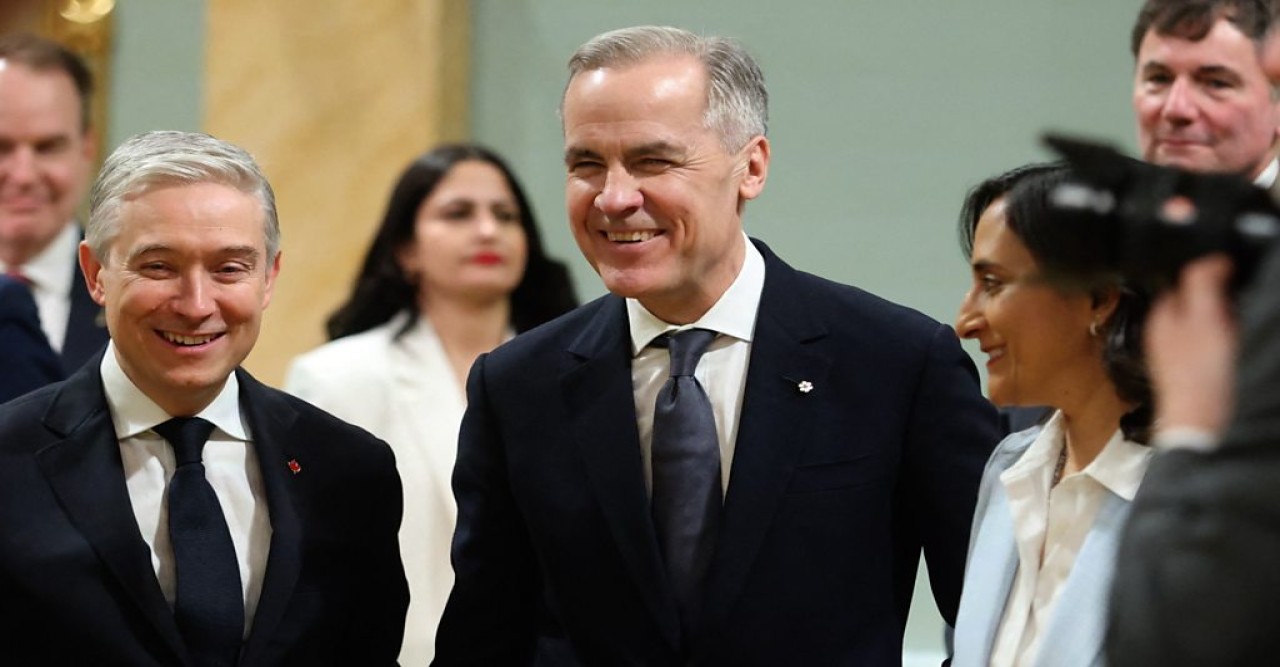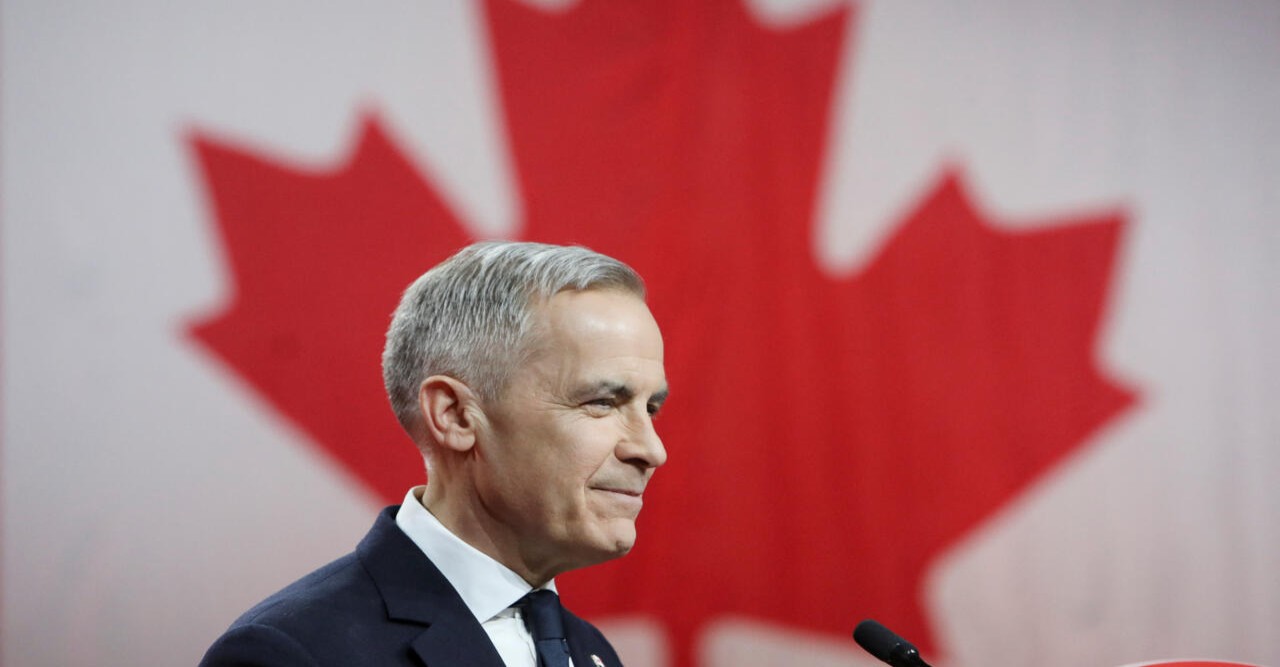
Congratulations to Mark Joseph Carney on Winning the 2025 Election Canada
Akbar Haider Kiron প্রকাশিত: ৩০ এপ্রিল, ২০২৫, ১০:০৩ এএম

Dr. Pamelia Riviere
Carney, a distinguished Canadian politician and accomplished economist, is set to serve as the 24th Prime Minister of Canada and the leader of the Liberal Party, positions he has held since 2025. He has also represented the Nepean riding as a Member of Parliament (MP), bringing his considerable expertise to the legislative arena. Mark Carney is regarded as the best choice for Canadians during this ongoing global crisis, as his unique blend of qualifications and experience is exceptionally suited to addressing the nation's economic challenges. Canadians recognize the need for a talented leader like him, who is known for his efficient management of complex economic issues. Carney’s impressive resume includes a remarkable educational background, as he is an alumnus of both Harvard University and the University of Oxford. He is uniquely notable for his historic role as the only individual to lead two major central banks. Between 2008 and 2013, he served as the eighth governor of the Bank of Canada, where he played a crucial role in shaping Canadian monetary policy during the tumultuous 2008 financial crisis. His leadership was pivotal during this period, guiding Canada through economic uncertainty with strategies to stabilize the financial system. Following his tenure in Canada, Carney became the 120th governor of the Bank of England from 2013 to 2020. In this position, he adeptly managed the British central bank's response to significant challenges, including the complexities surrounding Brexit and the early stages of the COVID-19 pandemic.
Carney’s impressive resume includes a remarkable educational background, as he is an alumnus of both Harvard University and the University of Oxford. He is uniquely notable for his historic role as the only individual to lead two major central banks. Between 2008 and 2013, he served as the eighth governor of the Bank of Canada, where he played a crucial role in shaping Canadian monetary policy during the tumultuous 2008 financial crisis. His leadership was pivotal during this period, guiding Canada through economic uncertainty with strategies to stabilize the financial system. Following his tenure in Canada, Carney became the 120th governor of the Bank of England from 2013 to 2020. In this position, he adeptly managed the British central bank's response to significant challenges, including the complexities surrounding Brexit and the early stages of the COVID-19 pandemic.
His experience also includes chairing the Financial Stability Board from 2011 to 2018, where he focused on global financial oversight and regulatory reform to enhance stability across international markets. As he steps into his role as Prime Minister, Canadians expect Carney to embody the qualities of an immigrant-friendly and gender-sensitive leader. His extensive experience in both national and international economic policy will be essential as he navigates the multifaceted landscape of Canada’s regional politics. Provincial leaders, historically known for their innovative collaborations to reduce internal trade barriers, will find a strong ally in Carney, particularly in response to crises such as the trade disruptions stemming from Trump's tariffs. Carney understands the critical importance of pacing in leadership, knowing precisely when to advocate for rapid change and when to exercise restraint. His ability to plant the seeds of new ideas while presenting them thoughtfully is expected to foster a collaborative environment where diverse perspectives can thrive, ultimately ensuring that Canada moves forward cohesively during challenging times. Canadians participated in a quick federal election on Monday that focused on how the candidates would react to US President Donald Trump's warnings about tariffs and his desire to make Canada the 51st state. Prime Minister Mark Carney, the current head of the Liberal Party, called for the election in March shortly after succeeding former Prime Minister Justin Trudeau. His main competitor in the election was Conservative leader Pierre Poilievre.
Carney understands the critical importance of pacing in leadership, knowing precisely when to advocate for rapid change and when to exercise restraint. His ability to plant the seeds of new ideas while presenting them thoughtfully is expected to foster a collaborative environment where diverse perspectives can thrive, ultimately ensuring that Canada moves forward cohesively during challenging times. Canadians participated in a quick federal election on Monday that focused on how the candidates would react to US President Donald Trump's warnings about tariffs and his desire to make Canada the 51st state. Prime Minister Mark Carney, the current head of the Liberal Party, called for the election in March shortly after succeeding former Prime Minister Justin Trudeau. His main competitor in the election was Conservative leader Pierre Poilievre.
Carney is now projected to have secured a fourth term for the party. Canada's public broadcaster, CBC News, forecasted that Mark Carney's Liberal Party would likely win sufficient seats in the House of Commons to establish a government. The BBC mentioned that it is uncertain whether they have attained a majority, and ballots are still being counted. We can expect to know how many seats each party has claimed in the next few hours. Federal election officials are required to count ballots manually in the presence of witnesses. Votes are only tallied after the polls close in each location where the ballots were cast. These projections are based on early results from Elections Canada, which oversees the federal elections in the country.
Global News anticipates Liberal Leader Mark Carney securing his Ottawa riding of Nepean in Monday’s federal election, marking his first entry into the House of Commons. Global News predicts that the Liberals under Carney will establish a government, granting the party its fourth term and maintaining Carney's position in the Prime Minister’s Office. However, it remains uncertain if the Liberals will achieve a majority or a minority government. He had no previous political experience before he successfully sought the leadership of the Liberal party to take over from former prime minister Justin Trudeau, who stated his decision to step down in January. Carney was inaugurated as prime minister just days after winning the Liberal leadership in March and called for an election a little over a week later. Despite his connections to the Northwest Territories, where he was born, and Edmonton, where he spent his childhood, Carney ultimately opted to contest in the suburban Ottawa riding of Nepean, regarded as a more secure Liberal seat.
Chandra Arya had held the riding since 2015. Still, the party disqualified him from running for re-election this year shortly after he was dismissed as a candidate in the Liberal leadership race. Carney was acclaimed as the nominee soon after Arya’s disqualification. Mark Carney’s Liberal Party secures a rare fourth consecutive term, although final results are still being tabulated. One of Carney's initial responsibilities will be appointing a new cabinet, drafting a federal budget, and engaging in trade discussions with U.S. President Donald Trump, which will commence immediately. According to the Toronto Star, with results still being processed as of 1:12 a.m., the Liberals required 172 seats to gain a majority in a newly enlarged Parliament of 343 seats.
As of publication, with 90 percent of the polls counted, the Liberals had either won or were leading in 165 seats, benefiting from the decline of support for the NDP and Bloc Québécois and securing 43 percent of the popular vote. Under the leadership of their assertive figure, Pierre Poilievre, the Conservatives increased their seat count, projected to achieve 147 ridings with 41.7 percent of the votes cast, marking the party's highest share of the popular vote since 1988. To manage their third consecutive minority government, the Liberals must negotiate with opposition parties that criticized Carney during the campaign, labeling him a liar, a plagiarist, and a supporter of wealthy investors rather than average Canadians. The Bloc Québécois might hold the balance of power, but based on unofficial counts, the Liberals could also lean on the NDP for support to reach the 172-seat threshold needed to enact legislation.
The Bloc held 23 seats, while the NDP managed just seven out of 24, significantly below the 12 required for official party recognition. Their portion of the popular vote stood at only six percent. NDP Leader Jagmeet Singh, after losing his third federal election, was lagging in his B.C. constituency. Before the official results were declared, he announced his intention to resign once an interim leader was selected. Despite leading the Conservatives to unprecedented fundraising and membership levels and launching an extensive ad campaign to depict Carney as unethical and untrustworthy, Poilievre could not convince a broader cross-section of Canadians to support his party in taking the government. On election night, the party appeared poised to surpass Stephen Harper’s 39.6 percent of the popular vote, which led to the Conservatives' majority in 2011.
However, this was insufficient in a contest significantly narrowed by the decline in votes for the NDP and Bloc Québécois, creating a more competitive two-party race than Canada has experienced in decades. The results fell short of what Liberal strategists had hoped for privately, aiming for 180 seats or more to secure a more substantial majority following a campaign that saw Carney, aged 60, ride a wave of Canadian concerns regarding the future. Candidates that Carney attracted to run, including former Quebec finance minister Carlos Leitão, gun control advocate Nathalie Provost, Ontario’s Hydro One chair Tim Hodgson, and former broadcaster Evan Solomon, successfully won seats in Parliament. BQ leader Yves-François Blanchet, who saw a drop of 10 seats from 33 to 23 in Quebec, expressed that his priority would be safeguarding Quebecs interests in a minority government.
The Greens' outcome was disappointing. Co-leader Elizabeth May retained her position, but her fellow co-leader, Jonathan Pineault, could not secure a seat, and Mike Morrice lost his riding in Kitchener Centre. In Quebec, the Liberals made gains at the expense of the Bloc Québécois, capturing BQ seats in crucial francophone ridings, which proved essential to their victory. Carney streamlined his cabinet, abandoned unpopular initiatives like the consumer carbon price and proposed hikes to capital gains taxes, curated new candidates for the election, and kept many ministers from the Trudeau era out of the public eye during the campaign. The Conservatives and NDP failed to capitalize on Carney's post-bank career at the helm of investment firm Brookfield Asset Management.
Meanwhile, Poilievre’s support base was more concentrated among younger male voters, while women and older voters increasingly shifted towards the Liberal Party. The Tory leader pledged never to legislate against abortion and suggested policies to tackle urban and suburban crime and domestic violence. However, polls indicated that his more hardline stance alienated female voters, while older voters favoured economic stability. At Parliament's dissolution on March 23, the Liberals held 152 seats, the Conservatives 120, the Bloc 33, the NDP 24, and the Greens two. Additionally, there were three Independents and four vacancies in the 338-seat Commons, which is expanding by five ridings due to population growth. At this moment, not only do Liberal Party voters wish Canada's new PM, Mark Carney, luck, but all Canadians as a whole, except for Conservatives.
Dr. Pamelia Riviere is a freelance writer and an analyst.